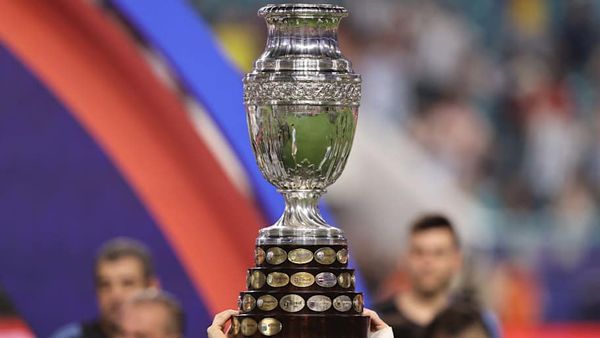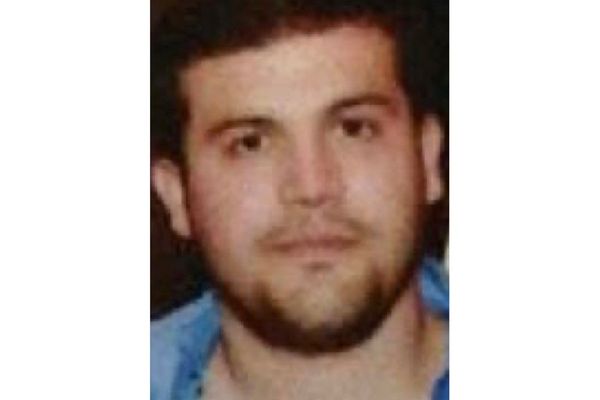
Have you ever looked at your NBA 2K team, then at the NBA in real life, then back at the game, and noticed that it doesn’t quite match up? As much as the team at 2K tries to make the in-game players as realistic as possible in terms of skill level and attributes, they are never quite perfect, are they? For instance, somebody like Darius Garland, with his elite shooting and athleticism, is a lot more valuable in the game than someone like Paolo Banchero, who lacks those qualities but is still rated higher than him in the game and is generally considered a better player than Garland in real life.
NBA 2K is like a funhouse mirror image of the real NBA. This mirror minimizes the impact of attributes like ball handling, defensive IQ, passing stats, and post-play while maximizing shooting, athleticism, speed, layups, stealing, and blocks. This funhouse mirror can make some players into all-stars and others into flops, and this happens the most frequently in upcoming rookies. Usually, 2K will buff or nerf players’ stats based on player reputation, but with young guys, their ratings can swing quite a bit until they are established in the league.
With the NBA draft coming up in less than a week, I wanted to look at how the 2K funhouse could distort the upcoming prospects simply based on stats and combine measurements, not based on expected draft position or scouting opinions. Simply how their stats and measurements would play in NBA 2K, based on how the game distorts stats to benefit offensive shooters and athletes over more cerebral inside scorers with disruptive defensive skills, let’s first take a look at the top ten prospects based on what the pundits and NBA scouts are saying, before taking a look at my NBA 2K distorted rankings.
NBA Real-Life Prospect Rankings
1: Cooper Flagg, SF/PF, Duke
2: Dylan Harper, PG/SG, Rutgers
3: Ace Bailey, SF, Rutgers
4: V.J. Edgecombe, SG, Baylor
5: Tre Johnson, SG, Texas
6: Kon Knuepell, SG/SF, Duke
7: Jeremiah Fears, PG, Oklahoma
8: Khaman Maluach, C, Duke
9: Derik Queen, C, Maryland
10: Kasparas Jakucionis, PG/SG, Illinois
Prospect Rankings Using NBA 2K Logic
(All stats are per 36 minutes)
1: Cooper Flagg, SF/PF, Duke
Real life consensus rank: 1st (-)
Height: 6’9’’/ Wingspan: 7’0’’/ Vert: 35.5”/ Sprint: 3.3/ Lane Time: 10.64
.481 FG%/ .385 3P%/ .840 FT%
22.5 PTS/ 8.8 REB/ 4.9 AST/ 1.6 BLK/ 1.6 STL
The sure-fire number one pick, Flagg, is one of the most talented prospects of the last ten years. He won the Naismith National Player of the Year award in his freshman season (joining Kevin Durant, Anthony Davis, and Zion Williamson as the only players to achieve that feat). Flagg also led Duke to their second-most wins in franchise history last year with 35.
Flagg’s skills are all-encompassing, and he has few to no holes in his game. He’s got generational defensive ability to alter shots and lockdown an opponent’s top scorer. He can pass and create plays like a point guard as well as shoot like a top-tier NBA scorer.
He may have struggled a bit in his sprint during the combine, only running a 3.3 (3rd to last amongst lottery picks), but he showed off his athleticism with a 10.64 lane agility drill (3rd best amongst these lottery players) to raise his potential speed and agility rating in the game. He’s also likely to be favored by the game due to his shooting ability (5th best on the list in FT%). Overall, Cooper Flagg is so good that he’d be rated number one, no matter what scale you use.
2: Walter Clayton Jr., PG, Florida
Real life consensus rank: 30th (+28)
Height: 6’3’’/ Wingspan: 6’4” / Vert: 37/ Sprint: 3.14/ Lane Time: 10.52
.448 FG%/ .386 3P%/ .875 FT%
20.2 PTS/ 4.1 REB/ 4.6 AST/ 0.6 BLK/ 1.3 STL
Walter Clayton Jr. certainly has the name recognition after leading the Gators to a National Championship win just a few months ago. He also has the production, scoring 34 points against Auburn in the Final Four and 30 points against Texas Tech in the Elite Finals (despite scoring just 11 on 30% shooting in the Championship). What Clayton doesn’t have is the trust of NBA scouts who have rated him in the late first to early second-round range in this draft cycle.
The scouts see an undersized, shoot-first guard who doesn’t have the great floor vision needed or awareness necessary to be an impact point guard, nor the size or shot creation to be an impact shooting guard. With that being said, it’s hard to argue that his skills and traits aren’t phenomenal.
His speed/athleticism puts him at the top end of the players in this draft, and his shooting ability similarly ranks in the top five of this year’s crop of prospects. This makes him somebody that any NBA 2K player would covet as a three-level scorer and offensive beast.
3: Rasheer Fleming, PF, Saint Joseph’s
Real life consensus rank: 21st (+18)
Height: 6’9.5”/ Wingspan: 7’5”/ Vert: 32.5/ Sprint: 3.24/ Lane Time: 10.95
.531 FG%/ .390 3P%/ .743 FT%
16.9 PTS/ 9.8 REB/ 1.4 AST/ 1.8 BLK/ 1.6 STL
With impressive size and average athleticism, Fleming’s physical traits don’t tell the whole story for this young man. Fleming’s .390 3P% (4th best in the lottery) and .531 FG% (3rd best among projected lottery players) prove that he is one of the best shooters in this class. His rebounds and defense stats also shine bright in a draft class that features many scoring specialists.
He projects as a 3&D power forward who may end up being a role player off the bench in the NBA but a potential star in NBA 2K.
4: Kon Knuepell, SG/SF, Duke
Real life consensus rank: 6th (+2)
Height: 6’6’’/ Wingspan: 6’6”/ Vert: 36.5/ Sprint: 3.35/ Lane Time: 11.92
.479 FG%/ .406 3P%/ 914 FT%
17 PTS/ 4.7 REB/ 3.2 AST/ 0.2 BLK/ 1.2 STL
The .914 free-throw percentage stands out on his stat sheet as a great indicator of his ability to be a difference maker as a catch-and-shoot wing with the potential to develop into a Klay Thompson-esque player. Those shooting numbers outweigh his subpar physical attributes in this evaluation, as he fits a very specific three-point specialist archetype that will mask much of his lack of athleticism in the game.
5: Nique Clifford, SG/SF, Colorado State
Real life consensus rank: 20th (+15)
Height: 6’6.5”/ Wingspan: 6’8”/ Vert: 35.5/ Sprint: 3.07/ Lane Time: 10.87
.496 FG%/ .377 3P%/ .777 FT%
19.2 PTS/ 9.8 REB/ 4.5 AST/ 0.6 BLK/ 1.2 ST
Clifford’s versatility is a valuable asset in both the NBA and in NBA 2K. I see Clifford in this draft as the poor man’s version of Cooper Flagg. With a true shooting% of .603 (ten points better than Flagg’s .593), and a +/- of 11.1 per 100 possessions (5.2 less than Flagg’s 16.3) Clifford’s advanced numbers are comparable to the Duke star, and his base numbers (3.3 less points, 1.0 more rebounds, 0.4 less assists, 1.0 less blocks, and 0.4 less steals than Flagg) also keep pace with Flagg for the most part.
You can also see that when it comes to athleticism Clifford’s traits may actually surpass Flagg in some elements (0.24 seconds faster in the sprint, even in the vertical, and 0.27 seconds slower in the lane test), Clifford proves that he deserves to be in the top five of a draft that puts Flagg at number one.
6: Jase Richardson, SG/PG, Michigan State
Real life consensus rank: 11th (+5)
Height: 6’2”/ Wingspan: 6’6”/ Vert: 38/ Sprint: 3.22/ Lane Time: 10.97
.493 FG%/ .412 3P%/ .836 FT%
17.3 PTS/ 4.7 REB/ 2.7 AST/ 0.4 BLK/ 1.2 STL
Technically the top 3-point shooter on this list — his relatively low free throw percentage suggests that someone like Knuepell might actually rate higher than him at the end of the day — Richardson is still somebody that should be highly coveted as a three-point specialist both in the NBA and NBA 2K.
Not only does Richardson have elite shooting ability, but he also has fantastic athleticism, a 38-inch vertical (4th best among lottery players), and run times that rank in the middle of the pack of the top fourteen NBA 2K players.
7: Dylan Harper, PG/SG, Rutgers
Real life consensus rank: 2nd (-5)
Height: 6’6”/ Wingspan: 6’10.5”/ Vert: 36.5/ Sprint: 3.16/ Lane Time: 11.07
.484 FG%/ .333 3P%/ .750 FT%
21.5 PTS/ 5.1 REB/ 4.5 AST/ 0.6 BLK/ 1.6 STL
Harper is nearly a lock as the number two pick in real life, but his underwhelming 3-point shooting percentage (3rd worst among lottery players) and lane time (5th worst in the lottery) sink him down to number seven in NBA 2K.
In real life, Harper is seen as an elite downhill slasher with generational ball handling skills and the ability to develop into a great facilitator with the ability to score in bunches and take over games offensively and defensively. In NBA 2K, however, he would be seen as a liability in the three-point game with not enough production as a playmaker to risk taking as a top-five prospect, even though he has solid defensive ability and great finishing moves at the rim.
8: Ace Bailey, SF, Rutgers
Real life consensus rank: 3rd (-5)
Height: 6’9”/ Wingspan: 7’0.5”/ Vert: 34.5/ Sprint: 3.12/ Lane Time: 10.97
.460 FG%/ .346 3P%/ .692 FT%
19 PTS/ 7.7 REB/ 1.4 AST/ 1.4 BLK/ 1.1 STL
Bailey’s .692 free-throw percentage (worst in this lottery pool) is very concerning because the free throw is often an indicator of shooting ability at the next level, and if you haven’t noticed, shooting is kind of a big deal for a small forward in the modern NBA. Obviously, everything outside his shooting ability is excellent, which helps him keep his status as a top-ten player in my NBA 2K rankings. Still, he’s definitely on thin ice, given that most of his upside is based on his scoring ability.
9: Tre Johnson, SG, Texas
Real life consensus rank: 5th (-4)
Height: 6’6”/ Wingspan: 6’10”/ Vert: 37.5/ Sprint: 3.28/ Lane Time: 10.49
.427 FG%/ .397 3P%/ .871 FT%
20.7 PTS/ 3.2 REB/ 2.8 AST/ 0.3 BLK/ 1.0 STL
Tre Johnson shocked me a bit with his slow sprint time, which clocks in just slightly better than Cooper Flagg’s underwhelming time, and Tre Johnson is dependent a lot more on his speed and athleticism to create plays than Flagg.
Despite the slower-than-expected time, Johnson is still one of the better shooters in this class. While his driving and inside game may be questionable, his shooting has never been in doubt. He should be solid in NBA 2K but might not have the ceiling people expect him to have in real life due to his great size and playmaking upside.
10: V.J. Edgecombe, SG, Baylor
Real life consensus rank: 4th (-6)
Height: 6’5”/ Wingspan: 6’7.5”/ Vert: 38.5/ Sprint: 3.2/ Lane Time: 11.27
.436 FG%/ .340 3P%/ .782 FT%
16.5 PTS/ 6.2 REB/ 3.5 AST/ 0.7 BLK/ 2.3 STL
One of the better defensive prospects coming out of college in the last decade, Edgecombe has the traits to take on a Lou Dort or Aaron Nesmith (both currently in the NBA Finals) type role at the next level. He has crazy leaping ability to make blocks and crazy-looking dunks, but overall, his athleticism isn’t what you would think it would be, given his physical profile and jumping ability.
His shooting is just average, and while he could develop into a 3&D guy, right now, he is just a defensive specialist. While this is highly valuable in the NBA, it’s just not that sexy in NBA 2K, especially when it’s not coupled with elite speed or shooting ability.







